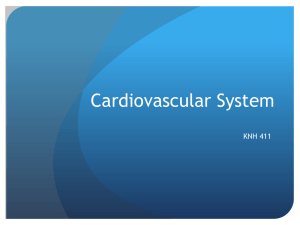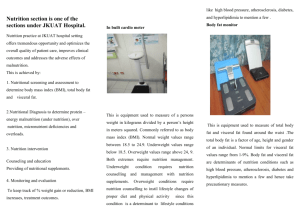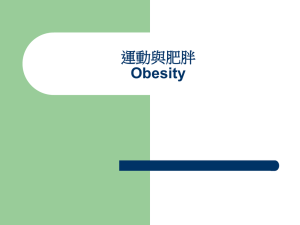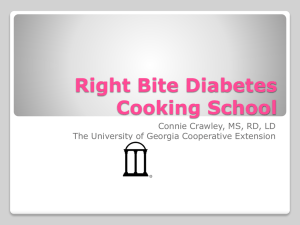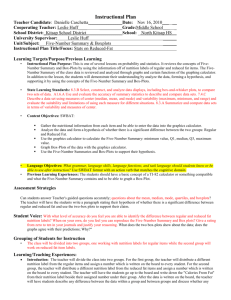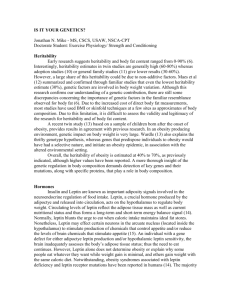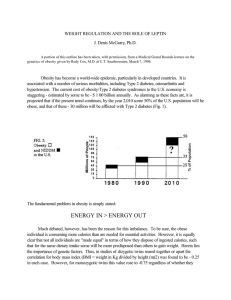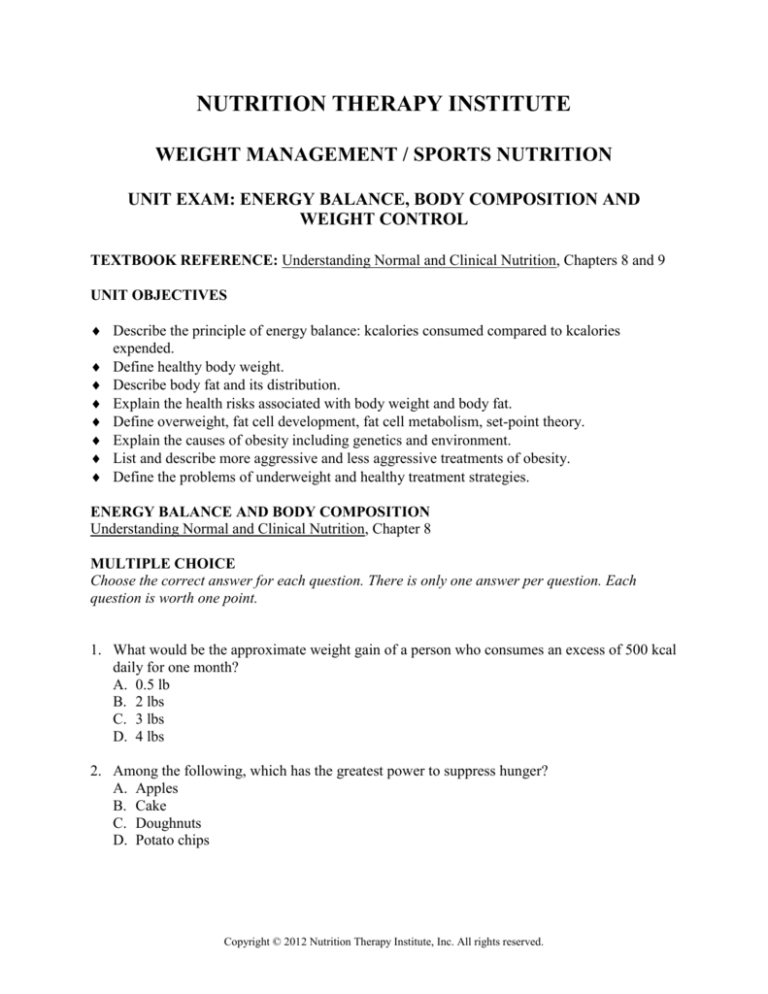
NUTRITION THERAPY INSTITUTE
WEIGHT MANAGEMENT / SPORTS NUTRITION
UNIT EXAM: ENERGY BALANCE, BODY COMPOSITION AND
WEIGHT CONTROL
TEXTBOOK REFERENCE: Understanding Normal and Clinical Nutrition, Chapters 8 and 9
UNIT OBJECTIVES
Describe the principle of energy balance: kcalories consumed compared to kcalories
expended.
Define healthy body weight.
Describe body fat and its distribution.
Explain the health risks associated with body weight and body fat.
Define overweight, fat cell development, fat cell metabolism, set-point theory.
Explain the causes of obesity including genetics and environment.
List and describe more aggressive and less aggressive treatments of obesity.
Define the problems of underweight and healthy treatment strategies.
ENERGY BALANCE AND BODY COMPOSITION
Understanding Normal and Clinical Nutrition, Chapter 8
MULTIPLE CHOICE
Choose the correct answer for each question. There is only one answer per question. Each
question is worth one point.
1. What would be the approximate weight gain of a person who consumes an excess of 500 kcal
daily for one month?
A. 0.5 lb
B. 2 lbs
C. 3 lbs
D. 4 lbs
2. Among the following, which has the greatest power to suppress hunger?
A. Apples
B. Cake
C. Doughnuts
D. Potato chips
Copyright © 2012 Nutrition Therapy Institute, Inc. All rights reserved.
3. Which of the following describes the process of thermogenesis?
A. Burning of fat
B. Synthesis of fat
C. Generation of heat
D. Generation of water
4. Which of the following increases the metabolic rate?
A. Fever
B. Sleeping
C. Fasting
D. Malnutrition
5. What is the approximate basal metabolism of a 110-pound woman between the ages of 18
and 30?
A. 850 kcal per day
B. 960 kcal per day
C. 1080 kcal per day
D. 1240 kcal per day
6. An index of a person's weight in relation to height is called:
A. Body mass index
B. Height to weight index
C. Ideal body weight index
D. Desirable body weight index
7. What is the approximate body mass index of a woman who is 5'5" and 125 pounds? You may
refer the chart in the back of UNCN.
A. 21
B. 26
C. 31
D. 36
8. What is the range of body fat content for normal weight women between the ages of 25 and
45?
A. 9-17%
B. 20-30%
C. 33-37%
D. 38-44%
9. In what region of the body is the storage of excess body fat associated with highest risks for
cardiovascular disease and diabetes?
A. Above the waist
B. Abdomen
C. Hips and thighs
D. Arms and shoulders
Copyright © 2012 Nutrition Therapy Institute, Inc. All rights reserved.
10. A high risk of weight-related health problems is seen in women whose waist circumference
begins to exceed:
A. 24 inches
B. 28 inches
C. 35 inches
D. 42 inches
ESSAY
Use a separate sheet to answer the following questions. Copy the question first on to your
answer sheet.
1. Discuss the benefits and adverse effects of slow and rapid rates of weight loss in overweight
people. 8 points
2. Define basal metabolic rate and discuss factors that increase and decrease it. 5 points
3. Describe the difficulties in using standard weight-for-height tables to assess people's body
weights. 4 points
Copyright © 2012 Nutrition Therapy Institute, Inc. All rights reserved.
WEIGHT CONTROL
Understanding Normal and Clinical Nutrition, Chapter 9
11. All of the following describe the behavior of fat cells EXCEPT:
A. The number decreases when fat is lost from the body.
B. The storage capacity for fat depends on both cell number and cell size.
C. The number increases at a faster rate in obese children than it does in lean children.
D. The number increases several-fold during the growth years and tapers off when adult
status is reached.
12. Which of the following is known to promote fat storage in adipocytes?
A. Glucagon
B. Lipoprotein lipase
C. Cellulite synthetase
D. Lipoprotein synthetase
13. What is the most likely explanation for why women readily store fat around the hips whereas
men readily store fat around the abdomen?
A. Differences in blood insulin levels
B. Differences in the activity of lipoprotein lipase
C. Differences in circulating lipid transport proteins
D. Differences in the activity of lipoprotein synthetase
14. Which of the following defines the body's set point?
A. Minimum weight of a person
B. Maximum weight of a person
C. Point at which a dieter plateaus and then drops weight quickly
D. Point above which the body tends to lose weight and below which it tends to gain weight
15. Which of the following describes a relationship between leptin and energy balance?
A. Fat cell sensitivity to leptin is higher in obese people.
B. A deficiency of leptin is characteristic of all obese people.
C. Blood levels of leptin usually correlate directly with body fat.
D. Major functions of leptin include an increase in hunger and a decrease in metabolic rate.
16. Approximately what percentage of people who lose weight by dieting succeed in maintaining
the weight loss over time?
A. 5%
B. 25%
C. 75%
D. 95%
Copyright © 2012 Nutrition Therapy Institute, Inc. All rights reserved.
17. According to the American Dietetics Association, what is the best approach to weight loss?
A. Avoid foods containing carbohydrates.
B. Eliminate all fats from the diet and decrease water intake.
C. Greatly increase protein intake to prevent body protein loss.
D. Reduce daily energy intake and increase energy expenditure.
ESSAY
Use a separate sheet to answer the following questions. Copy the question first on to your
answer sheet.
1. List the major causes of obesity. Which ones can be controlled by dietary manipulations or
behavior modification? 8 points
2. Explain the set point theory of obesity. 5 points
3. Discuss the role of leptin in the regulation of food intake and energy storage. 5 points
4. Explain the changes in metabolism consequent to a decrease in energy intake. How are these
changes modified by regular physical exercise? 8 points
Total Points Possible: 60
Copyright © 2012 Nutrition Therapy Institute, Inc. All rights reserved.



